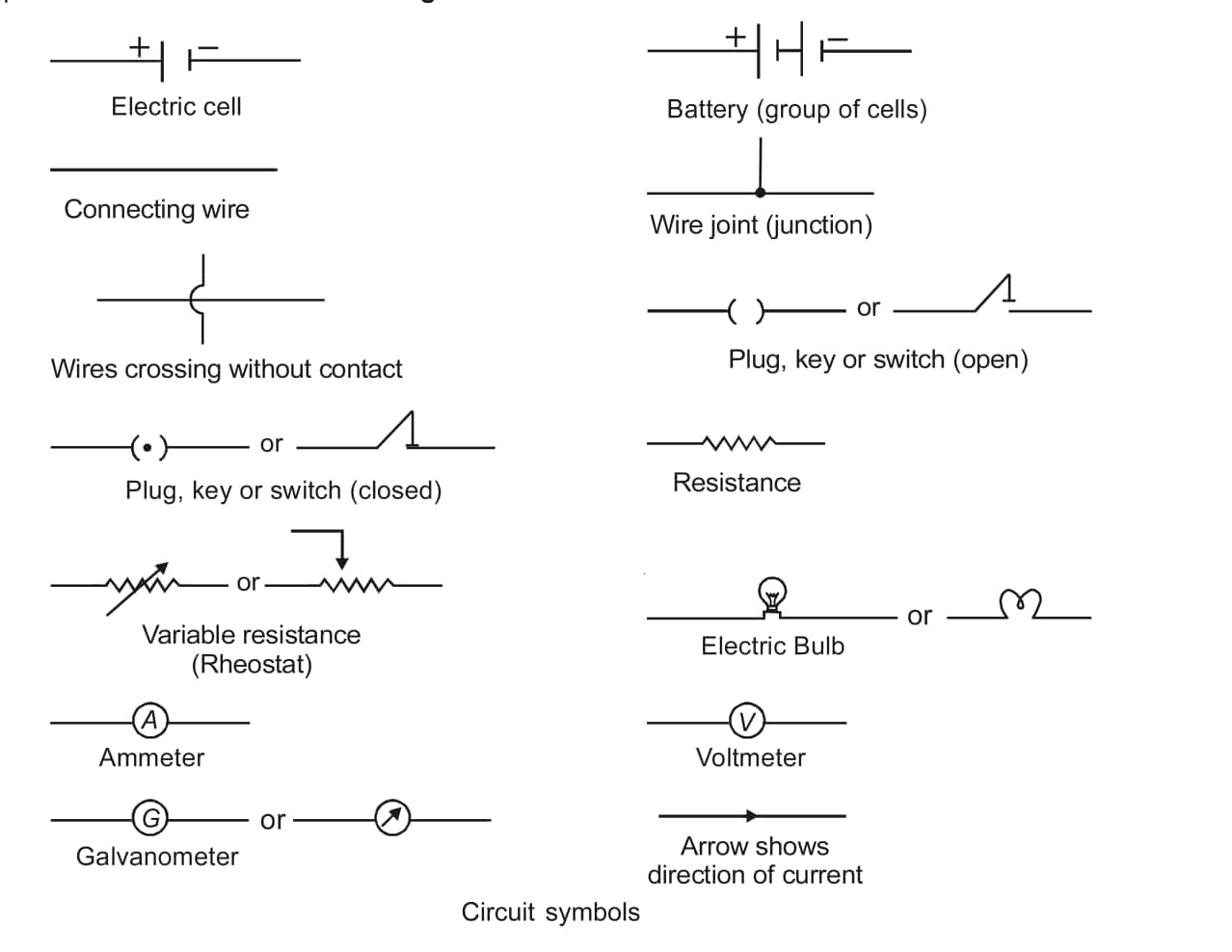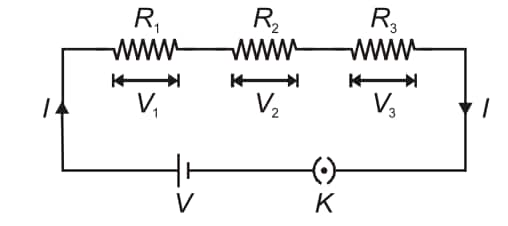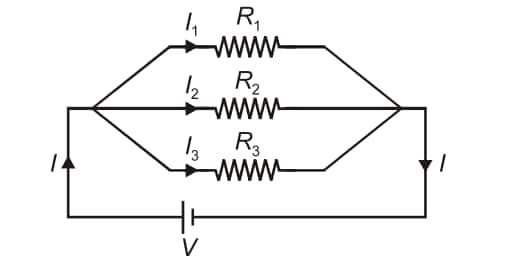Electricity Class 10th Notes - Free NCERT Class 10 Science Chapter 12 Notes - Download PDF
Have you ever wondered how an electric bulb can be lit or how wires get hot when an electric current is used to pass through them? All these very interesting concepts are described in Chapter 11, Science 10: Electricity. The chapter establishes a good foundation on the knowledge of electric current, electric circuits, potential difference and calculation of electrical energy. In the CBSE Board Exams, NTSE, NSO, NSEJS, and other competitive exams, the NCERT notes Class 10 Science Chapter 11 Electricity are important.
This Story also Contains
- NCERT notes Class 10 Science Chapter 11 Electricity
- NCERT Class 10 Science Chapter 11 Notes
- How to Master Class 10 Science Chapter 11 Electricity?
- Importance of Class 10 Physics Chapter 11 Electricity Notes
- NCERT Class 10 Science Chapter Wise Notes
- NCERT Books and Syllabus
These NCERT notes Class 10 Science Chapter 11 Electricity are prepared by subject experts of Careers360 on the basis of the new CBSE curriculum and cover all the main points on electric current, potential difference, Ohm's Law, resistance, series and parallel combination of resistors, and the heating effect of electric current. Important formulas, diagrams, solved examples, and real-life applications are also provided in the NCERT notes Class 10 Science Chapter 11 Electricity to make learning easy, revising quickly and ensuring that every student is well prepared to take difficult examinations. These NCERT notes are written in a clear, student-friendly manner, helping students grasp numerically based concepts with confidence. Whether you are revising for unit tests or preparing for final board exams, these Electricity Class 10 Science notes provide an excellent tool to strengthen concepts, improve accuracy, and boost overall performance.
Also Read,
NCERT notes Class 10 Science Chapter 11 Electricity
The Class 10 Science Chapter 11 Electricity Notes PDF is a well-organised revision guide which is able to assists students in revising fast and efficiently in order to take the exams. Formulas, solved examples, and all significant ideas are gathered in Electricity Class 10 Science notes, arranged in a readable and easily comprehensible form. Developed with the newest CBSE syllabus, they can be used to save time, reinforce the concepts, and improve the performance of the students during their exams, in general.
NCERT Class 10 Science Chapter 11 Notes
NCERT Class 10 Science Chapter 11 Notes give a very brief, exam-oriented, summary to enable the students to revise and perform better in exams. These notes are structured following the recent CBSE curriculum and are presented in a simple-to-understand format, hence making it easier to memorise and use. They are ideal when one has to revise something in a short time, prepare at the last moment, and enhance concept clarity.
Electric Current
The rate of flow of electric charges through any cross-section of a conductor is called electric current. If a net charge $Q$ passes through a cross-section in time $t$, then electric current $l$ is
$
I=\frac{Q}{t}=\frac{\text { charge }}{\text { time }}
$
(i) The current is a fundamental quantity in physics with unit ampere (A). So 1 A is the amount of current flowing in the circuit if 1 C of charge moves across it in 1 s.
(ii) The conventional direction of current is taken to be the direction of flow of positive charge or opposite to the direction of flow of electrons.
(iii) A conductor remains uncharged when current flows through it.
(iv) For a given conductor, the current flowing through it does not vary as its cross-sectional area varies.
Electric Potential and Potential Difference
Electric potential may be defined as the amount of work done in bringing a unit positive charge from infinity to a point under consideration, while the electric potential difference between two points in an electric circuit may be defined as the amount of work done to move a unit positive charge from one point to another. Thus, when a charge $Q$ is moved from point $A$ to point $B$ in an electric circuit, and $W_{A B}$ work is done, then potential difference between them is
$V_B-V_A=\frac{W_{A B}}{Q}$
The SI unit of electric potential difference is volt (V), named after Alessandro Volta (1745-1827), an Italian physicist. One volt is the potential difference between two points in a current-carrying conductor when 1 joule of work is done to move a charge of 1 coulomb from one point to the other.
$
\text { Therefore, } 1 \text { volt }=\frac{1 \text { joule }}{1 \text { coulomb }}
$
Circuit Diagram
-
A conducting path between the terminals of a source of electricity and other electronic devices in continuity is called an electric circuit.
-
A schematic diagram showing the way different electronic devices are connected in a circuit is known as a circuit diagram.
The various conventional electrical symbols used to represent some of the most commonly used electrical components in an electrical circuit diagram are as follows :

Ohm’s Law
-
The current (I) flowing through a conductor is directly proportional to the potential (V) across its ends at a constant temperature.
$
\begin{aligned}
& V \propto I \\
& V=R I
\end{aligned}
$where $R$ is the constant of proportionality and is called the resistance of the conductor. It is the property of a conductor to resist the flow of charges through it.
-
The property of conductors to resist the flow of current is known as Resistance.
-
S.I. unit of resistance = ohm (Ω).
-
R=V/I gives us 1 Ohm=1Volt/1Ampere
Factors on Which the Resistance of a Conductor Depends
The resistance of a conductor of uniform thickness depends on the length of the conductor ($L$) and the area of cross-section ($A$).
$
\begin{aligned}
& R \propto \text { length of conductor } \\
& R \propto \frac{1}{\text { Area of cross-section of the conductor }} \\
& R \propto \frac{L}{A} \quad \text { or } R=\rho \frac{L}{A} \quad \text { ( } \rho \text { is pronounced as rho) }
\end{aligned}
$
where $\rho$ (constant of proportionality) is called the specific resistance or resistivity of the conductor. It depends on the nature of the material of the substance, not on its shape and size. It is defined as the resistance offered by a wire of the material of unit length and unit cross-sectional area, or we can also define resistivity as the resistance of a unit meter cube of that material.
The SI unit of resistivity is ohm-metre ( $\Omega-\mathrm{m}$ ). The reciprocal of resistivity is termed as conductivity. The conductivity or the specific conductance measures a material's ability to conduct electric current.
$
\text { Conductance }=\frac{1}{\text { Resistance }}
$
It is represented by G and its unit is mho.
Resistance of a System of Resistors:
When multiple resistors are connected in a circuit, their total or equivalent resistance depends on how they are arranged:
1. Resistors in Series:

Total Resistance: $R_{\text {total }}=R_1+R_2+R_3+\ldots$
- Current remains the same through all resistors.
- Voltage divides across each resistor.
2. Resistors in Parallel:

Total Resistance: $\frac{1}{R_{\text {total }}}=\frac{1}{R_1}+\frac{1}{R_2}+\frac{1}{R_3}+\ldots$
- Voltage remains the same across all resistors.
- Current divides across each resistor.
Advantages of parallel combination over series combination
(i) In a parallel combination, we can operate each device with its individual switch, which is not possible in a series combination.
(ii) All equipment works at the same voltage.
(iii) Different equipment has different current ratings, so they need different currents, and this is possible only in a parallel combination
Heating Effect of Electric Current
We have seen that when the electric current passes through a resistor, it becomes hot because the electric energy spent or the electric work done in moving the charges is converted into heat energy.
Joule gave the law on the heating effect of current, known as Joule's law, which states that the heat produced in a resistor is directly proportional to the
(i) Square of the electric current for a given resistance, i.e., $H \propto I^2$.
(ii) Resistance for a given current, i.e., $H \propto R$.
(iii) Time for which the current flows through the resistor, i.e., $H \propto t$.
So, by this law, we get
$
H=I^2 R t
$
So, $H=I^2 R t=\frac{V^2}{R} \cdot t=V I t$
Practical Applications of the Heating Effects of Electric Current
- Electrical appliances like an iron, oven, and heater are a few devices that are based on Joule’s Law of Heating.
- This phenomenon is also applied to produce light in a bulb.
- One of the most important applications of Joule’s Law of Heating is the fuse used in electric circuits.
Electric Power
Electrical power is the electrical work done per unit time or the rate at which electric energy is dissipated or consumed in an electric circuit.
$
\begin{aligned}
P & =\frac{\text { Work done }}{\text { Time taken }} \\
P & =\frac{W}{t}
\end{aligned}
$
-
S.I. unit of power = Watt (W).
-
1 Watt of power is consumed when 1 A of current flows at a potential difference of 1 V.
-
The commercial unit of electric energy is in kilowatt-hour (kWh), which is generally known as a Unit.
-
1kWh=3.6MJ
How to Master Class 10 Science Chapter 11 Electricity?
To learn Class 10 Science Chapter 11, one needs to have clear knowledge of the basic electrical concepts and good numerical-solving abilities. Formulas, principles of circuits, and problem applications can be easily learned by the students with the help of the right strategy. Conceptual clarity can be enhanced by the use of a focused approach, and the full marks in this high-scoring chapter can be guaranteed.
- Begin by learning the fundamentals of charge, current, potential difference, and symbols of circuit.
- Study Ohm's law and solve mathematical problems to enhance your application knowledge.
- Learn about the factors that affect resistance, such as length, area and material of conductor.
- Practice drawing and reading circuit diagrams with standard symbols.
- Learn the series and parallel combination of resistors and memorise the effective resistance formulas.
- Solve several numericals on series and parallel combinations- they are common in board exams.
- Learn the heating effect of current and the formula for electric power and energy.
- Memorize the relationships: P = VI, P = I2R and P = V2/R
- Go through all NCERT examples and exercise numericals, as many board questions come directly from NCERT.
- Revise past year questions in order to recognise the patterns and concepts that matter.
- Analyse your mistakes in solving numericals and redo them again to improve on weak areas.
Importance of Class 10 Physics Chapter 11 Electricity Notes
Electricity Class 10 Science Chapter 11 CBSE notes are very essential since they allow students to revise all the important concepts, formulae and applications of numbers in a clear and systematic manner. Topics such as Ohm's Law, resistance, electric power and combinations of circuits are simplified in these notes and easier to learn and recall. They enhance conceptual clarity and enhance the ability to solve problems with step-by-step solutions, diagrams, and real-life examples. They also save time when revising, lessen confusion, and the high-weightage topics that one is likely to be asked in board exams can be accessed easily. These notes increase confidence and guarantee improved results in CBSE exams or even competitive exams such as NTSE, NSO and NSEJS by outlining the most popular patterns of questions and providing brief explanations. Moreover, they enable the students to develop precision in the numerical questions, assist students in preparing for last-minute and also serve as a reliable study guide in attaining full marks in the electricity chapter.
NCERT Class 10 Science Chapter Wise Notes
The Chapter-Wise Notes, Class 10, offer an organised and effective method of revision of all the topics for the students based on the newest CBSE syllabus. The notes are a compilation of important concepts, formulas, diagrams, and a summary of the exams in a readable format. Students can get all the significant study material fast, quickly, making preparation faster, more organised, and efficient with chapter-wise links appearing in one place.
NCERT Solutions of Class 10 Subject Wise
NCERT Class 10 Exemplar Solutions for Other Subjects:
Frequently Asked Questions (FAQs)
Learning becomes more memorable and easier to remember for exams when concepts like the heating effect of current are connected to devices like heaters and irons or resistance to wire materials used at home. Confidence in answering HOTS and case-based questions is also increased by application-based understanding.
The main topics covered in Chapter 10 of NCERT for Class 11 Science are
Current
Potential difference
Resistance
Resistivity
Combination of Resistances
Heating effect of electric current
Circuit diagrams and symbols are frequently used in exam questions for drawing or understanding circuits. Frequent revision guarantees that you can quickly identify and create diagrams, which is crucial for receiving marks in both theoretical and practical questions.
The notes for Chapter 11 of Science in Class 10 were created by subject experts and will give you further knowledge on the subject. You can solidify your foundation with these notes from class 10 Electricity notes. Here, key ideas are thoroughly discussed. The segment covers all aspects of electricity.
As given in the Class 10 Science Chapter 11 notes pdf download;
At constant temperature, the current (I) flowing through a conductor is directly proportional to the potential difference (V) across its ends.
V∝I
VI=constant
V/I=R
V=IR
R is the constant of proportionality, which is called Resistance.
The law states that the heat produced in a resistor is directly proportional to the
o Square of the current in the resistor
o Resistance of the resistor
o Time for which the current flows through the resistance
It’s mentioned vividly in the NCERT notes for class 10 Science chapter 11.
Given in, Class 10 Science chapter 11 notes that The amount of work done to transport a unit charge from one point to another is known as the potential difference (V).
Popular Questions
Courses After 12th
Applications for Admissions are open.
As per latest syllabus. Physics formulas, equations, & laws of class 11 & 12th chapters
JEE Main Important Chemistry formulas
Get nowAs per latest syllabus. Chemistry formulas, equations, & laws of class 11 & 12th chapters
JEE Main high scoring chapters and topics
Get nowAs per latest 2024 syllabus. Study 40% syllabus and score upto 100% marks in JEE
JEE Main Important Mathematics Formulas
Get nowAs per latest syllabus. Maths formulas, equations, & theorems of class 11 & 12th chapters
